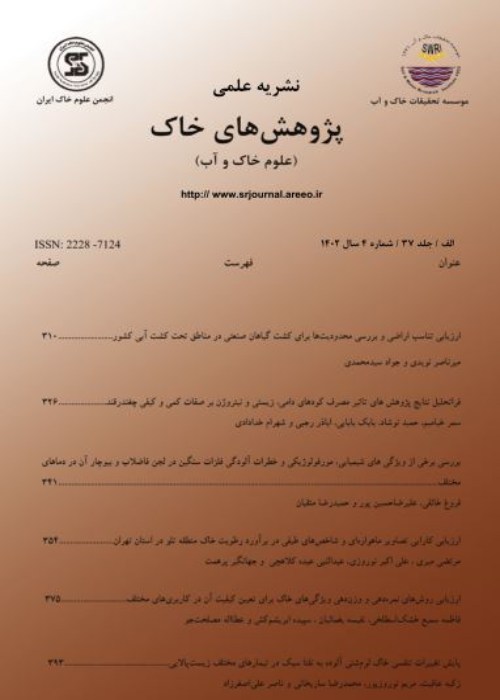Effect of Azotobacter Biofertilizer and Management of Urea Application Accompanied with Manure on Yield and Protein Content of Rained Wheat
In order to investigate the effect of seed inoculation with Azotobacter and, urea and manure on yield and protein content of rainfed wheat, an experiment was carried out with two levels of manure including M0 (without manure) and M15 (15 ton per hectare) and ten fertilizer treatments with different application methods of urea and seed inoculation with Azotobacter. Experimental treatments on Azar2 variety included T1=Check (without application of urea), T2=Total of urea in autumn, T3=Total of urea in spring, T4=Half of urea in autumn + Half of urea in spring, T5=Half of urea in autumn + spraying of urea in spring, T6=Inoculation of seed with Azotobacter, T7=(T2+T6), T8=(T3+T6), T9=(T4 +T6), T10= (T5+T6) as subplots. The experiment was carried out with three replications in fallow-wheat rotation as split-plot in a randomized complete block design at Ghamloo Research Station. Results showed that the effect of manure on biological yield, grain yield, and thousand kernel weight (TKW) was significant at 1%, 1%, and 5% probability levels, respectively. The effects of urea treatments on biological yield, grain yield, and TKW were all significant at 1% probability levels. Interaction effects of manure and fertilizer treatments on biological yield, grain yield, and TKW were not significant. Mean comparison of different traits on Duncan multiple range tests, indicated that grain yield of T4, T8, T3, T2, T5, T9, T7, and T10 compared with check increased significantly (p<0.05) as 845, 833, 759, 755, 678, 657, 670 and 622 kg. ha-1, respectively, and all were in one statistical group. T6 did not differ relative to the check. Interaction effects of manure and fertilizer treatments on grain protein content were significant (p<0.05). Mean comparison of the main effect of different fertilizer treatments were indicated that except for treatment 6, other treatments compare with check were increased grain protein content but this increase was significant (p<0.05) only for T8. Generally, result indicated that for rainfed wheat, the best application time of total urea was in autumn; and in the conditions of using half of urea in autumn, foliar application of urea (5%) in spring (tillering stage) as a plant nitrogen supplement can be recommended.
- حق عضویت دریافتی صرف حمایت از نشریات عضو و نگهداری، تکمیل و توسعه مگیران میشود.
- پرداخت حق اشتراک و دانلود مقالات اجازه بازنشر آن در سایر رسانههای چاپی و دیجیتال را به کاربر نمیدهد.



